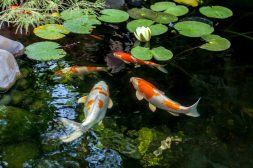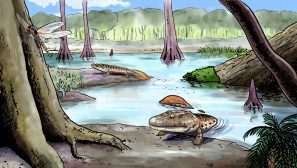Definition
noun, plural: stranglers
(botany) A hemiepiphyte or epiphyte that grows when seed germinates at the canopy of the host plant and then produce many aerial roots that grow down to the ground and eventually strangle its host tree
Supplement
Stranglers are plants that are named based on their tendency to strangle their host plants. They are exemplified by Ficus species (e.g. Ficus altissima, F. aurea, F. barbata, F. benghalensis,
F. burtt-davyi, F. citrifolia, F. craterostoma, F. tinctoria, F. macrophylla, F. obliqua, F. virens, and F. watkinsiana). They are commonly called strangler figs. These plants are hemiepiphytes (or epiphytes) that begin their life as a seed most likely dispersed by a bird to the top of a host tree. From the canopy the seed germinates and then grows roots down to the ground. The fig’s aerial roots eventually encircle the host tree and appear to strangle the host tree. When this happens, the host tree may fail to survive due to competition for light. In spite of the eventual death of the host, the strangler fig continues to grow with its roots growing into the soil, becoming thick, and now serving as additional trunks. The host tree that dies will rot away and leave a hollow cylinder of strangler fig roots. This cylinder of roots is ecologically important since it may serve as shelter or breeding site of birds, bats, and other animals. Strangler figs though are also capable of germinating and developing as independent trees, i.e. without a host tree.
See also:
Dictionary > Strangler
You will also like...

The Origins of Life
This tutorial digs into the past to investigate the origins of life. The section is split into geological periods in the..

The Hominids
The hominid family diversified from the apes around 6 to 8 million years ago. Since then, the evolutionary path has prov..

Freshwater Communities & Lentic Waters
Lentic or still water communities can vary greatly in appearance -- from a small temporary puddle to a large lake. The s..

New Zealand’s Biodiversity
Find out more about New Zealand's unique biodiversity by exploring a range of different ecosystems and the key role of s..

Amphibians & Early Reptiles
Obtaining air outside an aquatic environment required species to acquire suitable adaptations, and this was the case of ..

Protein Synthesis
Part of the genetic information is devoted to the synthesis of proteins. mRNA, a type of RNA, is produced as a transcri..

